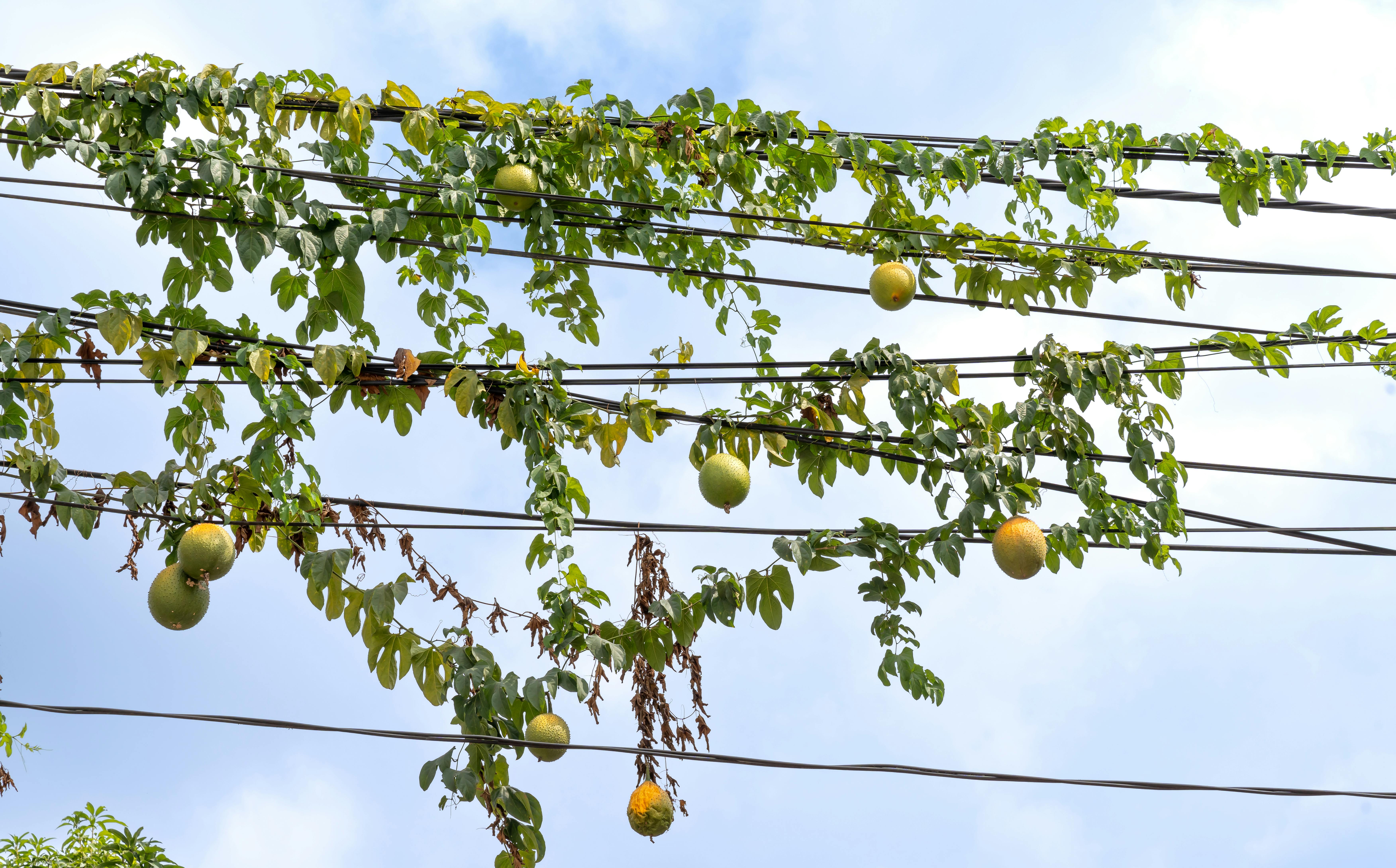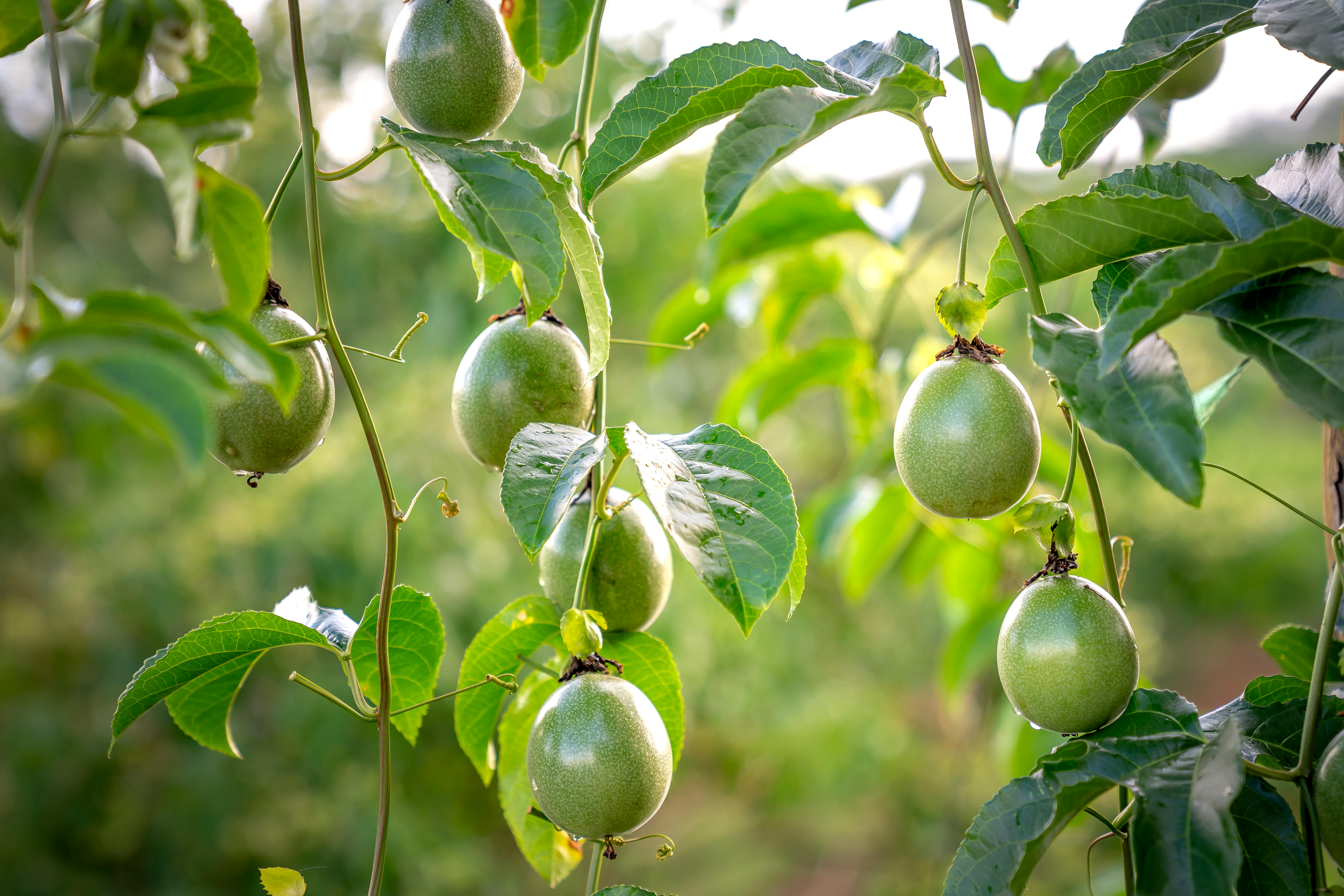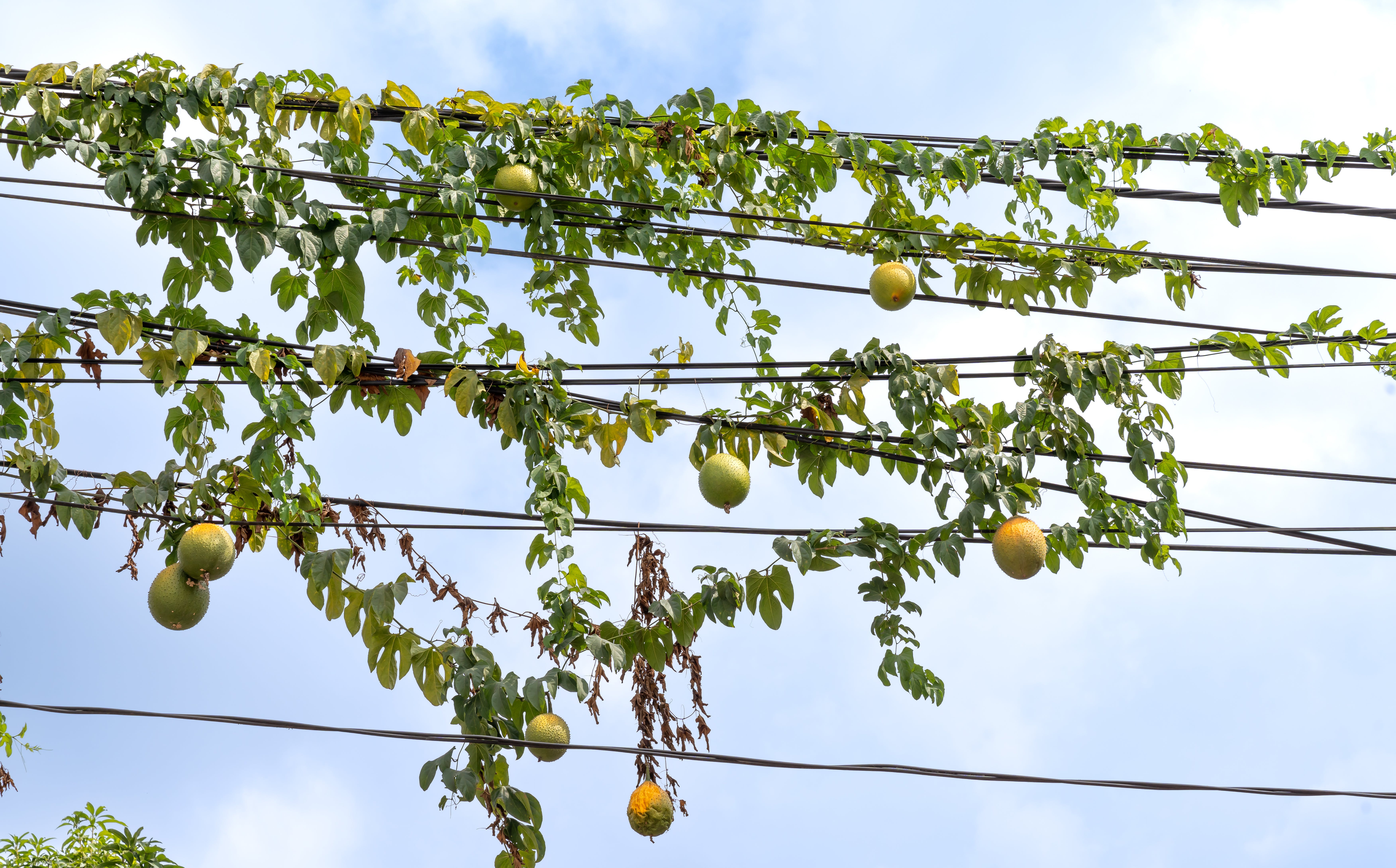Pruning a passion fruit vine is an important part of maintaining the health and productivity of the plant. Pruning helps to keep the vine in shape, promotes new growth, and encourages more flowers and fruit. There are a few simple steps that you can take to ensure that your passion fruit vine is properly pruned. This guide will provide you with all the information you need to successfully prune your passion fruit vine.To prune a passion fruit vine, start by cutting off any dead or diseased branches. Then, remove any shoots or suckers that are growing near the base of the plant and thin out any crossed or overcrowded branches. Cut off any weak or spindly stems that are not producing any fruits. When pruning, use clean, sharp pruning shears and cut just above a node (where leaves grow from). Make sure to leave at least three buds on each branch so the plant can produce new growth. Additionally, be sure to prune back overgrown vines to promote air circulation and more fruit production. Finally, make sure to fertilize your passion fruit vine after pruning for best results.
Know Your Passion Fruit Vine
Passion fruit vines are an exotic, luscious and sweet-smelling tropical fruit, native to South America. They are a climbing vine with long, green tendrils that can reach up to 20 feet in length. The passion fruit plant has beautiful, fragrant flowers with five petals in a star shape and bright yellow or purple fruits. The fruits have a soft, juicy pulp containing many edible seeds. Passion fruit is rich in antioxidants and vitamins A and C, making it an excellent source of nutrition. It can be eaten fresh or made into jams or juices.
The passion fruit vine is fairly easy to grow at home if you have the right conditions and care for it correctly. It needs plenty of sunlight and warm temperatures to thrive. Planting in well-draining soil is also important, as the roots of the vine can rot easily if they are left wet for too long. You should also water your plant regularly but not too much, as overwatering can cause the vines to become weak and unhealthy.
Pruning is another important part of caring for your passion fruit vine. Pruning should be done during the winter months when the plant is dormant and not actively growing new leaves or fruits. This will help keep your vine healthy by removing any dead or diseased branches and promoting new growth in springtime.
In addition to pruning, fertilizing your passion fruit vine will help it produce more vibrant flowers and bigger fruits. Organic fertilizer should be applied every few weeks during springtime when new growth appears on the plant. You should also mulch around your passion fruit vine to help retain moisture and keep weeds at bay.
Overall, growing a passion fruit vine can be a rewarding experience that yields delicious rewards! With proper care and maintenance, you’ll be able to enjoy beautiful blooms and sweet-smelling fruits for many years to come!
Tools You Need For Pruning
Pruning is an essential part of maintaining a healthy and vibrant garden. It helps to promote growth, remove dead or diseased branches, and keep plants looking their best. To ensure successful pruning, you’ll need the right tools. Essential pruning tools include pruners, loppers, saws, and shears.
Pruners are small handheld scissors that are ideal for cutting small branches up to one-half inch in diameter. They come in two basic styles: bypass pruners and anvil pruners. Bypass pruners have two curved blades that pass by each other like scissors when cutting. Anvil pruners have one curved blade that slices downward onto a flat ‘anvil’ surface.
Loppers are larger than pruners and are capable of cutting through branches up to two inches in diameter. They come with either bypass or anvil blades and are most effective when used on woody stems with a diameter of one inch or less.
Saws are the right choice for thicker branches that can’t be cut with pruners or loppers. There are many different types of saws available for different kinds of projects, from bow saws for large limbs to folding saws for compact storage when you’re done using them.
Finally, shears are used mainly for shaping plants rather than heavy-duty cutting jobs like saws can handle. They come in a variety of shapes and sizes but all work by using two sharp blades that slice through the branch as they close together like scissors or a knife would do when cutting food items.
When it comes to selecting the right tool for your garden’s needs, it’s important to consider the size of the branch you need to cut as well as the type of plant being trimmed before making a purchase decision. With the right tools on hand, you’ll be able to enjoy beautiful and healthy plants year-round!
When Is The Best Time To Prune?
Pruning is an important part of maintaining healthy plants. Proper pruning helps to encourage new growth, remove dead or diseased branches, and improves the overall appearance of the plant. Knowing the best time to prune your plants is essential to achieving the desired results.
In general, the best time to prune is during the late winter or early spring when the plant is dormant. This allows for maximum growth potential as new buds and shoots are just beginning to form. Pruning at this time also helps reduce the spread of disease as most diseases are less active during this period.
If you’re pruning a tree or shrub, it’s best to wait until after it has flowered so that you don’t accidentally remove any buds that could have produced flowers. This is especially true for flowering trees and shrubs such as cherry trees and lilacs.
In some cases, it may be necessary to give your plants a ‘haircut’ throughout the season. If this is necessary, try to avoid cutting back too severely as this can cause excessive stress on your plants and can stunt their growth. If you must do some summer pruning, try to do it in late summer or early fall when temperatures are cooler and there is plenty of time for new growth before winter sets in.
It’s important to remember that each type of plant has its own unique needs when it comes to pruning so make sure you familiarize yourself with your particular species before getting started. With some basic knowledge and proper timing, you can ensure that your plants look their best all year round!
Introduction
Pruning is an important part of caring for your plants. It helps to keep them healthy and looking their best. Pruning also helps to control the size and shape of the plant, as well as encouraging new growth. This step-by-step guide will help you get started with pruning your plants.
Step 1: Choose Your Pruning Tools
The first step in pruning is to choose the right tools for the job. Pruners come in a variety of shapes and sizes, so you’ll need to choose the right one for your particular plant. For smaller plants, scissors or snips are usually sufficient. For larger plants, loppers or hand shears are recommended. Make sure to choose quality tools that are sharp and clean, as this will make pruning easier and more effective.
Step 2: Determine Where To Prune
Before you start pruning, you’ll need to decide which parts of the plant should be removed. Start by removing any dead or diseased branches or stems first, then prune away any crossing branches or branches that are growing too close together. When possible, make cuts above a bud so that new growth will be encouraged.
Step 3: Make Cuts Carefully
When making cuts, be sure to use sharp tools and cut at an angle about ¼ inch above the bud in order to avoid damaging it. Make sure not to leave any stubs when cutting branches as this can lead to disease or rot in the plant.
Step 4: Clean Up Afterwards
After pruning is complete, it’s important to clean up any debris left behind from your cuts. Remove all leaves and twigs from around the base of the plant and dispose of them properly in order to prevent any disease from spreading.
Conclusion
Pruning is an important part of caring for your plants and can help keep them healthy and looking their best. With this step-by-step guide, you should have everything you need to get started with pruning your plants correctly and safely.

Pruning and Cutting Off Suckers and Weak Vines
Pruning and cutting off suckers and weak vines is an important step in the process of caring for grape vines. Pruning helps increase fruit production, reduce disease, improve vine health and shape the vine. It also helps to control the size of the vine, allowing it to fit into desired spaces. Pruning is done in late winter or early spring before new growth begins. When pruning, it is important to remove any dead, diseased or damaged wood, as well as any shoots that are growing away from the main trunk or stem. It is also important to remove any lateral shoots that are growing from the main trunk. These lateral shoots can lead to an overcrowded vine with too much foliage and not enough fruit production. Additionally, it is important to remove any suckers that are growing from below the bud union at the base of the vine. Suckers can take away energy from other parts of the vine and can lead to a decrease in fruit production if left unchecked. Finally, it is important to cut off any weak vines that are not producing fruit or those that have become overgrown. Pruning and cutting off these weaker vines will help ensure that your grapevines stay healthy and productive for many years to come.
Removing Dead or Unwanted Branches
Tree pruning is an important part of tree maintenance. Removing dead or unwanted branches helps the tree stay healthy and strong. Dead or damaged branches can become dangerous, as they can cause injury to people and property. Pruning also helps to improve the shape, productivity, and overall health of the tree. It can also help to reduce disease and pest infestations by removing potential entry points.
When pruning trees, it is important to be careful not to damage live branches or bark. This can cause permanent damage and may prevent the tree from producing healthy growth in the future. Care should also be taken not to remove too much foliage, as this can lead to sunburn on exposed areas of bark.
It is best to use sharp tools when pruning a tree, such as a saw, shears, or loppers. Dull blades can cause uneven cuts that leave wounds open for disease and pests to enter the tree. Always make sure that tools are clean before use, as dirty blades can spread disease from one plant to another.
It is important to follow proper pruning techniques when removing dead or unwanted branches from trees. This includes cutting back limbs at least six inches away from the trunk of the tree; this will encourage new growth on the remaining branch and help promote a strong structure for the tree overall. When cutting off large limbs, it is best to make three separate cuts: one at the top of the limb where it meets the trunk, one halfway down the limb near where it meets another branch (called a “drop cut”), and one at the bottom of limb close to where it emerges from the trunk (called an “undercut”). This will help ensure that no bark is damaged during removal and that no stubs are left behind that could create weak points in the structure of the tree.
In addition to removing dead or unwanted branches for safety purposes, pruning can also be done for aesthetic reasons such as improving aesthetics or promoting certain shapes in a landscape setting. It is important to remember that each species of tree requires different types of pruning techniques; consulting with an arborist may be beneficial if you are unsure what type of pruning your particular species needs in order to remain healthy and safe for its environment.
Thinning Out The Canopy Of The Vine
Thinning out the canopy of a vine is an important part of vineyard management. It involves pruning the top of the vine to allow sunlight to reach the lower parts of the plant and increase the air circulation around it. The goal is to create an open canopy by selectively removing some of the leaves and shoots. This will allow more sunlight and air to reach the grapes, which will help them ripen more evenly and increase their quality. By thinning out the canopy, fewer grapes will be produced but they will be larger and of higher quality.
Pruning can also help reduce disease pressure on the vines. By removing any diseased leaves or shoots, you can stop any diseases from spreading further. This is especially important with powdery mildew, which can spread quickly if not controlled. Additionally, thinning out a vine’s canopy can help reduce competition for resources like water and nutrients between vines, allowing each one to get enough resources for healthy growth.
When thinning out a vine’s canopy it is important to do so carefully in order to maintain its balance and structure. You should always start at the top of the vine and work your way down, pruning shoots that are too close together or blocking light from reaching other areas of the plant. It is also important not to remove too many leaves or shoots as this can weaken or damage the plant. Thinning out should be done gradually over time as it takes time for new shoots and leaves to grow back in place of those that are removed.
Overall, thinning out a vine’s canopy is an important part of vineyard management that helps promote healthy growth and high-quality grapes. With careful pruning and gradual thinning over time, you can ensure that your vines remain healthy while producing high-quality fruit year after year.

Conclusion
Pruning a passion fruit vine is not as intimidating as it may seem. When done correctly, pruning can improve the overall health and yields of your passion fruit vine. Pruning should be done in the late winter or early spring before the growing season has begun. Make sure to use clean, sharp pruners to avoid infection and disease. Remove any dead or diseased vines, as well as any vines that are growing in the wrong direction. Pruning will help keep the vine healthy and productive for years to come.
With a bit of time and effort, you can easily learn how to prune a passion fruit vine. Pruning your passion fruit vine may seem intimidating at first, but with proper care and maintenance, you can have delicious passion fruits year after year.



